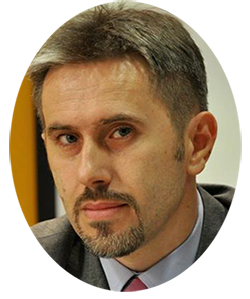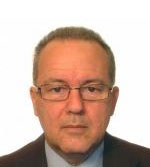
Leadership development in South Africa – Insights from a trainer
South Africa – also called the rainbow nation – is famous for its beautiful beaches, an impressive wildlife, the warm hospitality of the people and much more. The country doesn’t have an easy past though. Uncertainty and intercultural conflicts are still noticeable. We talked to Gerard Le Sueur from South Africa, who is working as a trainer for almost 20 years about the current challenges, differences to Europe and the being a trainer in times of digitalization.
The current situation: a challenging environment and the Seta system
According to your opinion: What is currently the biggest challenge for organizations in South Africa?
Gerard: There are a few: the political uncertainty/turmoil, corruption and ethical issues involved in that, economic climate and uncertainty, including uncertain and changing economic policy, a political economic atmosphere that is unfriendly to business, navigating the volatile and the uncertain environment every day.
“Nice to have” or a strategic factor of success: How do you experience that South African organizations view (international) leadership development at the moment and how will that be in the future?
There are different levels or hierarchies. Multinational companies, like European ones will very often follow the global trend to focus on their core business and outsource product and service delivery. This delivery is mostly global and from one or few sources; one global delivery. The same is true in South Africa, where multinationals will drive delivery of leadership training from a single point, often outside of South Africa. Large South African organizations follow the trend in that they will follow the Leadership technology that is trending and they don’t fall far behind. Here these South African organizations will often use Business schools or very well-known consulting companies to delivery programs. The fact that in South Africa there is a system for delivering training that is acknowledged officially via Seta’s (points), which can collect towards an official qualification or access to university programmes, means that there is often collaboration with business schools or officially recognised Seta providers. Locally there is is also a tendency to developing leadership skills in levels, basic management (upskilling people who have little “technical” management experience), where one would say the leadership is not new or sexy, but as the leadership level and experience increases there is more strategic and personal process side of Leadership that is found, like you do globally.
Training designs in South Africa & “African leadership”
As we all know international leadership development is a lot about intercultural awareness and empathy. For a training professional doing a leadership program in South Africa: What would you as the expert recommend and are there important things he/she shall pay special attention to?
You are never an expert, just another person in the room. We are different and the same. Don’t pretend to be the same, when you aren’t and don’t be totally different (better or not from here). When you engage deeply in South Africa it stretches you. Concepts like VUCA are everyday real experiences, you need to be able to feel totally uncertain, listen deeply and say you are sorry without losing your center. A friend says, “It’s the choice between being right or happy.” In Africa, this choice will confront you!
People from many different cultures are living in South Africa and there are eleven official languages which are probably not always easy: Are there any typical challenges when it comes to the cultural differences of the participants of a leadership program and did it change a lot in the last couple of years?
In South Africa, there is a huge discussion going on about “what is African leadership?” This comes from the colonial inheritance, which involves EVERYONE, even Europeans coming over to work in South Africa. So we need to be very open to questioning and discussing what works for South Africa. Even if you agree to come up with the same result, the discussion and questioning are important. Don’t bring your powerpoints and say this is how the world works.
There is a higher level of volatility and dissatisfaction, this between cultures. Meaning that the sensitivity and “aggression” is higher, but the energy generated by openness and warmth is also much higher. So never be afraid, unless you think you know better.

In South Africa, the rainbow nation, people from many different cultural backgrounds are living which is not always easy
People from Europe who don’t know South Africa may underestimate how developed South Africa actually is – in your opinion: are there any major differences between leadership development in South Africa and Europe for instance and if yes, can you tell us something about them?
We are talking about African leadership (maybe a more globally accepted form of leadership), inclusivity and equality on a very deep level. Europe is not really anywhere near the same depth of this discussion. The Status quo in Europe is very strong to the point that nobody really recognizes it, “They don’t see, that they don’t see what they don’t see”, whereas in Africa there is real disruption here. Chaos and lack of clarity too, but rigorous discussion and challenging.
Being a trainer in times of digitalization
What do you think of the following: In times of unstoppable digitalization – Are classroom trainings – which means face-to-face – still up-to-date or will they vanish soon? And why/why not? Can you think of any differences between Europe and South Africa?
The University of Stellenbosch Business school has been doing very advanced virtual classrooms for many years, including people who sit “in the room”. Running webinars, online (with presence via media tools) is very common and developing itself very professionally, using IT technology to engage and connect in very practical ways. Here I would say Europe is actually behind in some ways, partly because it’s closer and easier to bring people together, geographically and economically. This, however, does not take away the need for “presence” programs but drives the ingenuity required to deliver impactful programs that are a mix, holding the engagement over longer periods of times, using a variation of technology.
Let’s talk about international leadership trainings in general: what is the most important thing when working as a trainer on an international level and what are the typical challenges? Can you give us any tips?
An Old bushman told me, “You white people (meaning westerners) are really stupid. First, you dig/build the hole you want, then when you lie in it, you cry that it isn’t right and you need to change it. He said, “There’s nothing to change. Everything is exactly as it should be.”
I understand that it is a huge arrogance and disservice to humanity, to think we know what to do and what must change. Don’t go to a leadership training thinking you are going to “fix” something or somebody. Rather stay at home and plant some veggies, if that’s your attitude.
According to your opinion: What will be the biggest challenge for the training & development industry in the next 5 to 10 years?
Global roll-out, that suits the local requirements, including finding the right level of collaboration to make this work for both the central organization and the localized.
Our interview partner
Gerard Le Sueur is living close to Cape Town, South Africa and has more than 18 years of experience in Consulting and Organisational change development, including topics such as Agile Leadership development and development of teams. He loves to be a development guide because it is his way to stay in a relationship with the world. His personal preference regarding development fields? “Whatever moves me and pulls me towards it. I love coaching at present.”
What serves you next?
Leadership development in Serbia
Only a few years ago, leadership trainings were seen more as a punishment than an opportunity to improve and develop. Even though the situation has changed a lot, many companies are still offering trainings just because the others do so. Darko Tot was telling us more about how organizations view leadership development at the moment, the current challenges for companies and much more.
Leadership development in Brazil - Insights from a long-time consultant
Silke Körner was born in Germany but have worked and lived in Brazil for many years. She talked to us about how she experiences leadership development in Brazil as a trainer and L&D consultant and how digital leadership influences the country, which has the largest economy in Latin America.
Leadership development in Greece
The financial recession that has resulted in shrinking household incomes, ambiguity, and pessimism is only one big challenge for Greek organizations at the moment. We talked to Sotiris Karagiannis, who has more than 20 years training in consulting experience in Greece, the Czech Republic and wider Balkans about the challenges and future trends of leadership development in Greece.



















